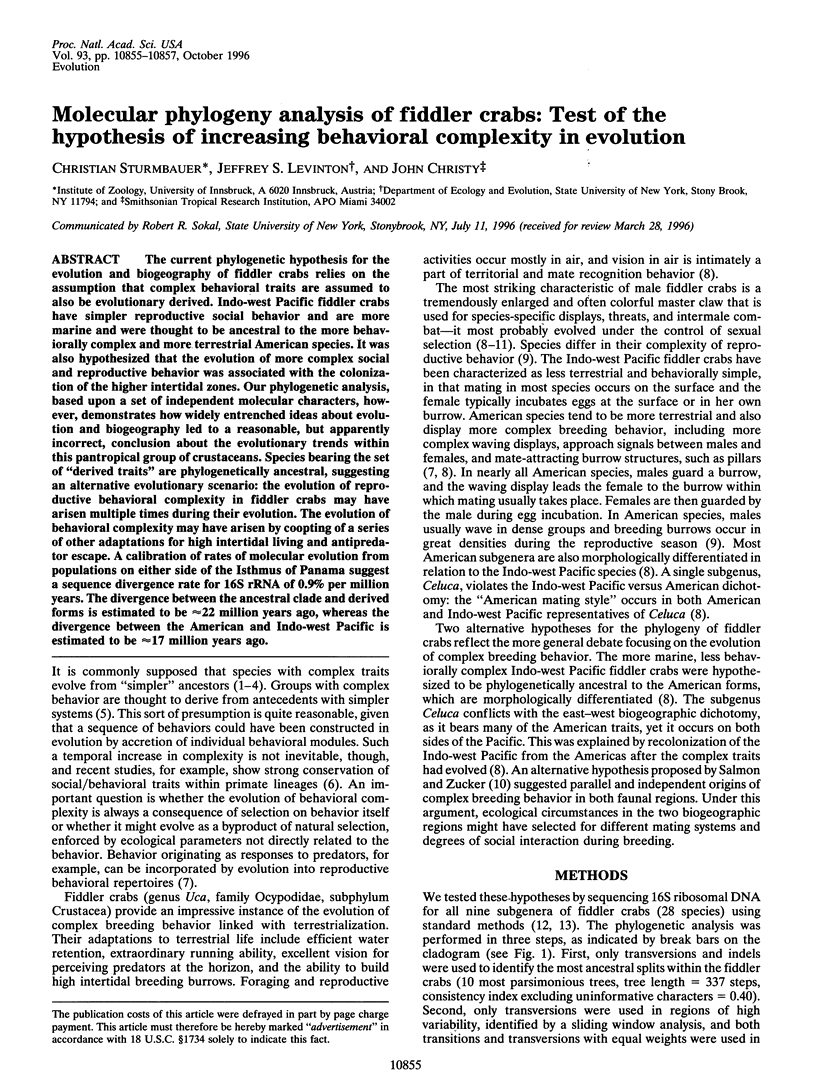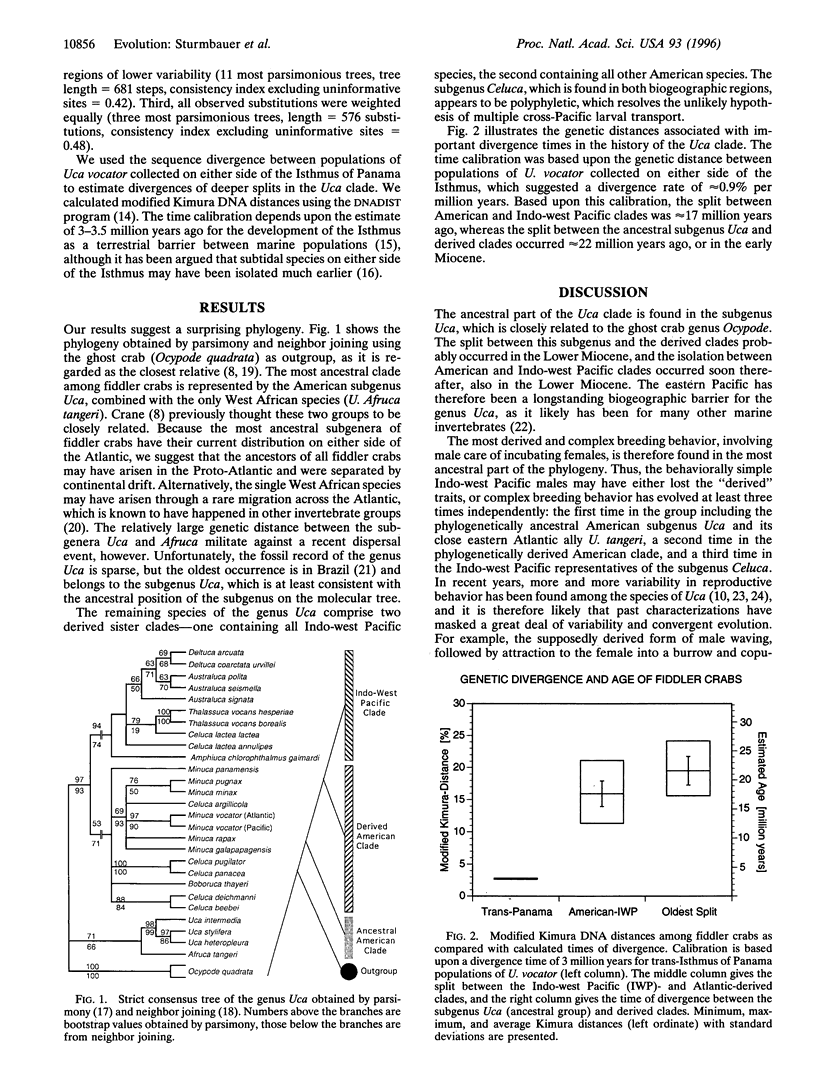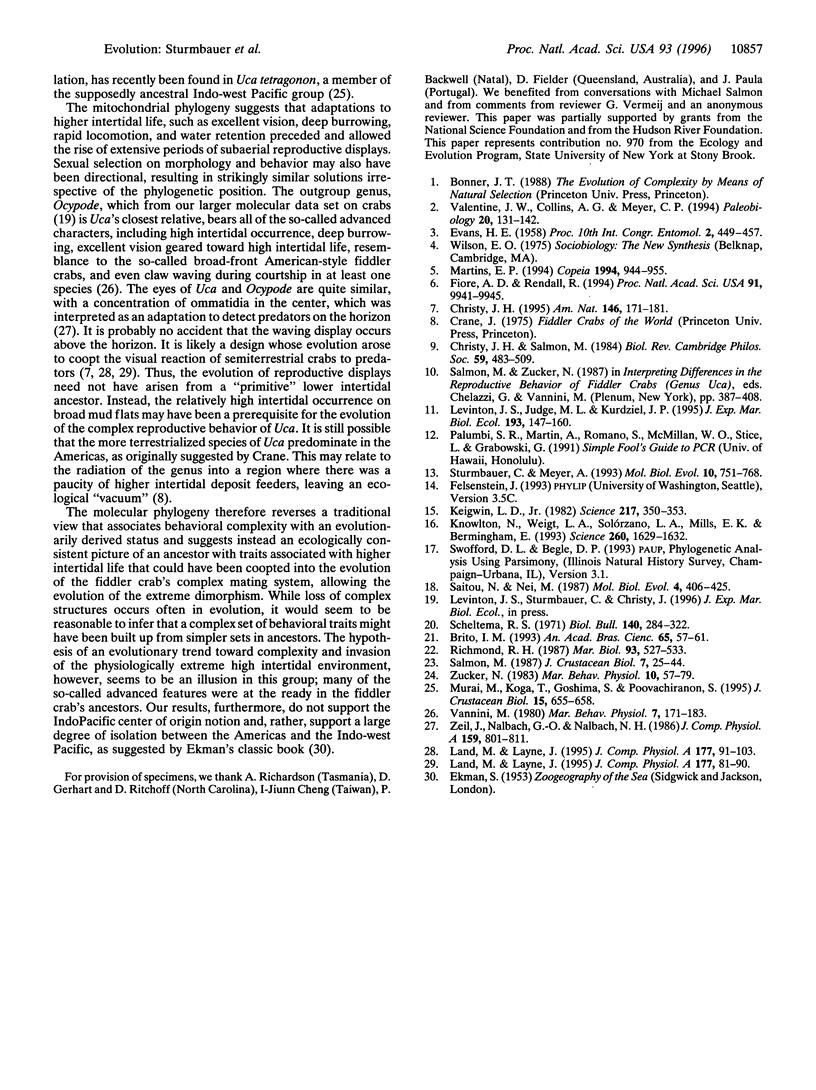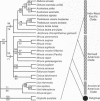Abstract
The current phylogenetic hypothesis for the evolution and biogeography of fiddler crabs relies on the assumption that complex behavioral traits are assumed to also be evolutionary derived. Indo-west Pacific fiddler crabs have simpler reproductive social behavior and are more marine and were thought to be ancestral to the more behaviorally complex and more terrestrial American species. It was also hypothesized that the evolution of more complex social and reproductive behavior was associated with the colonization of the higher intertidal zones. Our phylogenetic analysis, based upon a set of independent molecular characters, however, demonstrates how widely entrenched ideas about evolution and biogeography led to a reasonable, but apparently incorrect, conclusion about the evolutionary trends within this pantropical group of crustaceans. Species bearing the set of "derived traits" are phylogenetically ancestral, suggesting an alternative evolutionary scenario: the evolution of reproductive behavioral complexity in fiddler crabs may have arisen multiple times during their evolution. The evolution of behavioral complexity may have arisen by coopting of a series of other adaptations for high intertidal living and antipredator escape. A calibration of rates of molecular evolution from populations on either side of the Isthmus of Panama suggest a sequence divergence rate for 16S rRNA of 0.9% per million years. The divergence between the ancestral clade and derived forms is estimated to be approximately 22 million years ago, whereas the divergence between the American and Indo-west Pacific is estimated to be approximately 17 million years ago.
Full text
PDF


Images in this article
Selected References
These references are in PubMed. This may not be the complete list of references from this article.
- Di Fiore A., Rendall D. Evolution of social organization: a reappraisal for primates by using phylogenetic methods. Proc Natl Acad Sci U S A. 1994 Oct 11;91(21):9941–9945. doi: 10.1073/pnas.91.21.9941. [DOI] [PMC free article] [PubMed] [Google Scholar]
- Keigwin L. Isotopic paleoceanography of the Caribbean and East pacific: role of panama uplift in late neogene time. Science. 1982 Jul 23;217(4557):350–353. doi: 10.1126/science.217.4557.350. [DOI] [PubMed] [Google Scholar]
- Knowlton N., Weigt L. A., Solórzano L. A., Mills D. K., Bermingham E. Divergence in proteins, mitochondrial DNA, and reproductive compatibility across the isthmus of Panama. Science. 1993 Jun 11;260(5114):1629–1632. doi: 10.1126/science.8503007. [DOI] [PubMed] [Google Scholar]
- Saitou N., Nei M. The neighbor-joining method: a new method for reconstructing phylogenetic trees. Mol Biol Evol. 1987 Jul;4(4):406–425. doi: 10.1093/oxfordjournals.molbev.a040454. [DOI] [PubMed] [Google Scholar]
- Sturmbauer C., Meyer A. Mitochondrial phylogeny of the endemic mouthbrooding lineages of cichlid fishes from Lake Tanganyika in eastern Africa. Mol Biol Evol. 1993 Jul;10(4):751–768. doi: 10.1093/oxfordjournals.molbev.a040042. [DOI] [PubMed] [Google Scholar]



